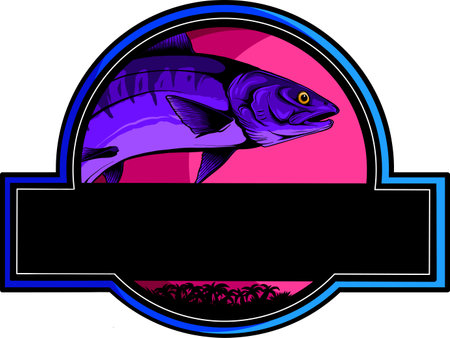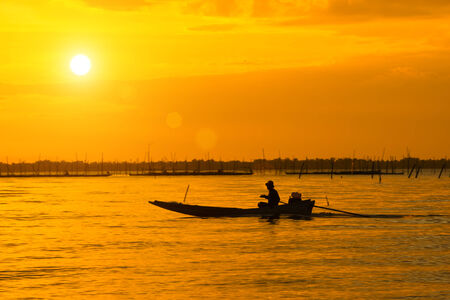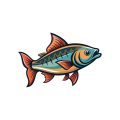1. Understanding Summer Saltwater Habitats
When it comes to summer saltwater fishing in the U.S., knowing how the environment changes is key to finding fish both inshore and offshore. The rising water temperatures, shifting tides, and summer weather patterns all play a big role in where fish go and how they behave.
How Water Temperature Affects Fish Behavior
As summer heats up, water temperatures climb. Different saltwater species respond in unique ways. Inshore, you’ll find species like redfish and speckled trout moving into deeper channels or shaded areas during midday heat, while feeding actively during early morning or late evening when waters are cooler. Offshore, pelagic fish like tuna and mahi-mahi often follow temperature breaks—those invisible lines where warm and cool waters meet because these spots attract baitfish.
Typical Summer Movements by Species
| Species | Inshore Movement | Offshore Movement |
|---|---|---|
| Redfish | Seek deeper holes, grass flats early/late | N/A |
| Speckled Trout | Move to cooler pockets near structure | N/A |
| Tuna | N/A | Follow temperature breaks offshore |
| Mahi-Mahi | N/A | Gather near floating debris in warmer water |
| Striped Bass | Head for deeper channels or mouth of rivers | N/A (mostly inshore) |
The Role of Tides in Summer Fishing
Tides are always important for saltwater fishing, but in summer, their influence is even more noticeable. Inshore anglers should target moving water—either incoming or outgoing tides—because that’s when bait gets flushed out and predators feed aggressively. Offshore, strong tidal currents around reefs and wrecks can concentrate both baitfish and game fish.
Best Times to Fish According to Tide
- Inshore: Start fishing an hour before a high or low tide for peak activity.
- Offshore: Look for times when tidal currents are strongest; this stirs up nutrients and attracts schools of fish.
Weather Patterns and Fish Movement
Summer weather patterns—like afternoon thunderstorms, sudden wind shifts, or calm mornings—can quickly change where fish hold. For example, after a storm passes, the drop in barometric pressure may trigger a feeding frenzy both near the shoreline and farther out at sea. Calm days often mean clear water, so fish might be spookier; using lighter tackle or natural baits can help increase your chances.
Quick Tips for Reading Summer Saltwater Habitats:
- Monitor local water temps with an inexpensive thermometer or smartphone app.
- Watch tide charts before planning your trip—timing is everything!
- Pay attention to birds diving on bait schools; they’re a sure sign predatory fish are close by.
- If the weather changes suddenly, be flexible and adapt your tactics on the fly.
Understanding how water temperature, tides, and weather patterns impact summer saltwater habitats is the first step toward having consistent success whether you’re casting from a pier or heading miles offshore.
2. Essential Gear and Tackle for the Season
Summer is prime time for saltwater fishing, whether you’re casting inshore for speckled trout or heading offshore for big game like mahi-mahi and tuna. Having the right gear makes all the difference. Here’s what you need to know about rods, reels, line choices, bait, and lures that can help you land a trophy catch this season.
Rods and Reels: The Right Combo Matters
Your rod and reel setup depends a lot on where you’re fishing and what you’re chasing. For inshore waters—think redfish, snook, or flounder—a medium to medium-heavy spinning combo usually does the trick. Offshore anglers targeting larger species will want heavy-duty conventional setups built to handle powerful runs and deep drops.
| Target Area | Rod Type | Reel Type |
|---|---|---|
| Inshore | 7 Medium/Medium-Heavy Spinning Rod | 3000–4000 Size Spinning Reel |
| Offshore | 6’6”–7’ Heavy Conventional Rod | Conventional or Lever Drag Reel (20–50 lb class) |
Line Choices: Strength Meets Stealth
The right line can mean more hookups—and fewer heartbreaks. For inshore fishing, 10–20 lb braided line with a fluorocarbon leader is great for sensitivity and stealth. Offshore, step up to 30–80 lb braid or monofilament to battle bigger fish and handle abrasion from reefs or wrecks.
| Fishing Type | Main Line | Leader Material |
|---|---|---|
| Inshore | 10–20 lb Braided Line | 15–30 lb Fluorocarbon Leader |
| Offshore | 30–80 lb Braid/Mono | 40–100 lb Fluorocarbon/Mono Leader |
Bait and Lures: What’s Hot This Summer?
Bait selection is all about matching what your target species are eating. Live shrimp, mullet, or menhaden work wonders inshore. Offshore, rigged ballyhoo or squid are classic choices for pelagics. Don’t overlook artificial lures—soft plastics, topwater plugs, bucktail jigs, and trolling lures all have their place in your tackle box.
| Species | Bait Options | Lure Suggestions |
|---|---|---|
| Redfish/Snook (Inshore) | Live Shrimp, Mullet Chunks | Paddle Tail Soft Plastics, Topwater Plugs |
| Mahi-Mahi/Tuna (Offshore) | Ballyhoo, Squid Strips | Trolling Skirted Lures, Metal Jigs |
| Flounder (Inshore) | Minnows, Mud Minnows | Bucktail Jigs with Gulp! Trailer |
| Sailfish (Offshore) | Live Goggle Eyes, Threadfin Herring | Duster Rigs with Natural Bait |
Tuning Your Gear for Different Targets
If you plan to switch targets during a trip—from chasing seatrout near the flats to jigging for snapper offshore—consider bringing multiple combos or using versatile setups with interchangeable leaders and lures. Pay attention to local baitfish patterns; “match the hatch” by using lures that mimic native forage. And don’t forget essentials like polarized sunglasses, sun protection, and a quality landing net to make your summer saltwater adventures both productive and fun!

3. Inshore Tactics: Flats, Bays, and Estuaries
Summer inshore fishing along the U.S. coasts is all about chasing redfish, speckled trout, and snook in shallow waters. Whether youre casting from a skiff or wading through grassy flats, knowing how to approach these species can make your day on the water a huge success.
Sight Fishing for Redfish
Redfish are famous for cruising the flats with their tails sticking out as they root around for food. Sight fishing is an exciting way to target them, especially during sunny summer days when the water is clear. Move quietly—wear polarized sunglasses to spot redfish before they spot you. Cast soft plastics or shrimp imitations ahead of their path and let the bait settle. Patience and a stealthy approach are key!
Topwater Action for Speckled Trout
Nothing beats the thrill of watching a speckled trout blow up on a topwater lure at sunrise or sunset. During the summer, trout hang out near oyster bars, grass beds, or current edges. Walk-the-dog style lures like Zara Spooks or Skitter Walks work great early and late in the day. Work your lure with a steady rhythm and be ready for explosive strikes!
Snook: Ambush Predators in Mangroves
Snook love ambushing prey near mangrove roots or dock pilings, especially when tides push baitfish into tight spots. Use live bait like pilchards or artificial jerkbaits that mimic injured fish. Cast close to structure and retrieve with quick twitches—be prepared for hard hits and fast runs!
Reading the Water: Where to Look
| Feature | Species Likely Found | Tips |
|---|---|---|
| Oyster Bars | Speckled Trout, Redfish | Fish edges at moving tides; use popping cork rigs |
| Mangrove Shorelines | Snook, Redfish | Cast parallel to cover; focus on shaded areas during midday heat |
| Grass Flats | Redfish, Trout | Sight fish on calm days; use weedless soft plastics |
| Docks & Pilings | Snook | Skip lures under docks; target during high tide for more action |
Bait Selection Cheat Sheet
| Species | Best Bait/Lure (Summer) | Presentation Tips |
|---|---|---|
| Redfish | Shrimp, Soft Plastic Paddle Tails | Crawl slowly along bottom; match local forage color |
| Speckled Trout | Popping Cork + Live Shrimp, Topwater Plugs | Lively action in low light; slow retrieve midday |
| Snook | Pilchards, Jerkbaits, DOA Shrimp Lures | Twitch near structure; fish moving water on incoming tide |
4. Offshore Strategies: Wrecks, Reefs, and Bluewater
Chasing Offshore Favorites: Mahi-Mahi, Tuna, and Kingfish
When summer heats up, the offshore action really comes alive. Out past the inlets and beaches, anglers chase some of the most exciting saltwater species—mahi-mahi (also called dolphin or dorado), tuna, and kingfish. These fish are fast, powerful, and always ready to put up a fight. Let’s break down some go-to tactics for finding and catching these offshore favorites around wrecks, reefs, and in the open bluewater.
Trolling: Covering Water for Active Fish
Trolling is a classic offshore technique that lets you cover a lot of water while searching for fish. By pulling lures or baits behind the boat at different speeds, you can trigger strikes from hungry mahi-mahi, speedy kingfish, and even big tuna.
| Target Species | Recommended Trolling Speed (mph) | Popular Baits/Lures |
|---|---|---|
| Mahi-Mahi | 6-8 | Ballyhoo rigs, skirted lures |
| Tuna | 5-7 | Cedar plugs, feather jigs |
| Kingfish | 4-7 | Spoons, drone spoons, live bait rigs |
Tips for Trolling Success:
- Use outriggers to spread your lines and avoid tangles.
- Vary lure colors to match local baitfish or stand out in clear bluewater.
- If you see floating debris or weedlines, troll nearby—mahi-mahi love this kind of cover.
Jigging: Vertical Action Over Structure
Reefs and wrecks hold tons of life during summer. Dropping vertical jigs down to these structures can bring quick results. Tuna often hang deep, while kingfish may strike jigs worked near the surface or mid-depth. Use fast lifts and drops to mimic fleeing bait.
Best Jigging Setups:
- Mahi-Mahi: 1-3 oz metal jigs with flashy finishes.
- Tuna: Heavier 3-8 oz knife jigs for deeper water.
- Kingfish: Slim-profile jigs ripped quickly through the water column.
Chunking and Live Baiting: Tempting Big Bites
If you want to draw fish close to the boat—and keep them there—try chunking or live baiting. Chunking means tossing pieces of cut bait into the current while fishing with similar baits on your hook. This creates a scent trail that brings in tuna and sometimes mahi-mahi.
Live baiting is especially popular for kingfish. Slow-troll or drift with lively menhaden, mullet, or blue runners rigged on wire leaders to tempt toothy kings.
Bait Selection Guide:
| Species Targeted | Bait Type | Best Application |
|---|---|---|
| Tuna | Chunked sardines, butterfish, squid strips | Chunking over deep structure or along temperature breaks |
| Mahi-Mahi | Small live pilchards or ballyhoo | Casting to weedlines or under floating debris |
| Kingfish | Live menhaden or blue runner (on wire) | Slow-trolling near reefs and drop-offs |
The Thrill of Bluewater Fishing
No matter which method you use—trolling, jigging, chunking, or live baiting—the excitement of offshore fishing in summer is tough to beat. With each trip out past the breakers, you never know if your next bite will be a colorful mahi-mahi leaping skyward, a screaming run from a tuna, or a powerful strike from a trophy kingfish. Get out there, experiment with different techniques, and enjoy everything America’s coastlines have to offer this season!
5. Staying Safe and Ethical on the Water
Summer Safety Tips for Saltwater Anglers
Saltwater fishing in the summer is an adventure, but it comes with unique safety challenges. High temperatures, intense sun, and busy waterways mean you need to be prepared. Here are some key summer safety tips:
| Tip | Details |
|---|---|
| Stay Hydrated | Bring plenty of water and drink regularly—even if you don’t feel thirsty. |
| Wear Sun Protection | Use SPF 30+ sunscreen, wear a wide-brimmed hat, UV-blocking sunglasses, and long-sleeve shirts. |
| Watch for Heat Exhaustion | If you or a friend feel dizzy, weak, or nauseous, get to shade and hydrate immediately. |
| Check the Weather | Summer storms roll in fast—always check forecasts before heading out and keep an eye on the sky. |
| Keep a First Aid Kit Handy | Cuts from hooks or fish spines happen—be ready to treat minor injuries on the water. |
Boating Etiquette: Sharing Busy Summer Waters
The summer season means more anglers and boaters are out enjoying the coast. Practicing good boating etiquette keeps everyone safe and happy:
- No Wake Zones: Always slow down near marinas, docks, and shallow flats where others may be fishing or swimming.
- Give Space: Don’t crowd other boats. Respect their casting area and anchoring spots.
- Mind Your Noise: Keep music at a reasonable level and avoid shouting across the water unless it’s for safety.
- Lend a Hand: If you see someone in trouble—boater or angler—offer help when it’s safe to do so.
Responsible Fishing Practices for Conservation
Sustainable fishing ensures healthy fish populations for years to come. Follow these guidelines every time you head out:
- Know the Limits: Check local regulations for size and bag limits before fishing. They protect fish populations during spawning seasons.
- C.P.R.—Catch, Photograph, Release: If you’re not keeping your catch, handle fish gently, use wet hands or rubber nets, snap a quick photo, and release them fast.
- Avoid Sensitive Habitats: Steer clear of grass beds, oyster reefs, and mangrove shorelines whenever possible to prevent habitat damage.
- Tidy Tackle: Don’t leave behind fishing line, hooks, or trash. Dispose of everything properly at shore facilities.
- Select Appropriate Gear: Use circle hooks and barbless options when possible—they reduce injury to released fish.
Quick Reference: Sun Protection Essentials for Anglers
| Item | Purpose |
|---|---|
| Sunscreen (SPF 30+) | Protects exposed skin from UV rays |
| Sunglasses (Polarized) | Cuts glare off water; protects eyes from UV light |
| Wide-brimmed Hat/Cap | Shelters face, ears, neck from sunburn |
| Lightweight Long Sleeves/Pants | Keeps skin covered without overheating |
Your Role as a Summer Steward of the Waterways
This summer, remember that staying safe and being ethical go hand-in-hand with great saltwater fishing. By looking after yourself and respecting the environment—and those sharing it—you’ll help preserve America’s best fishing spots for generations to come.


